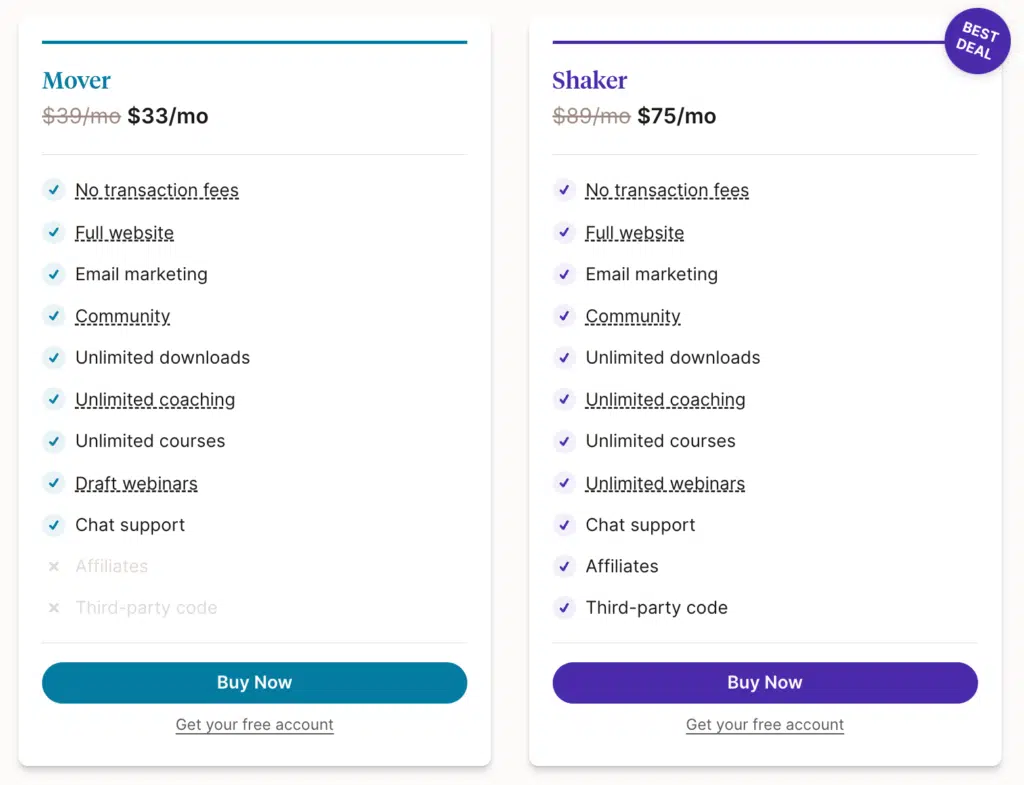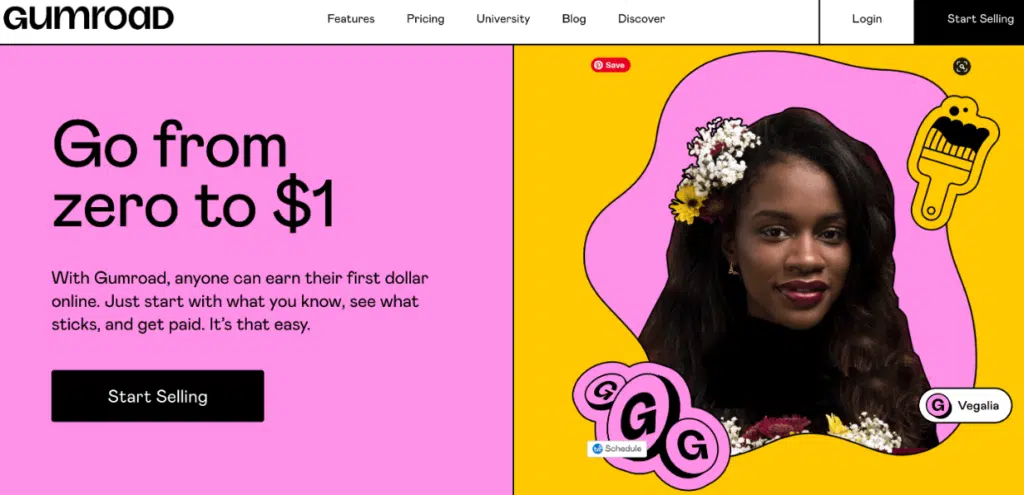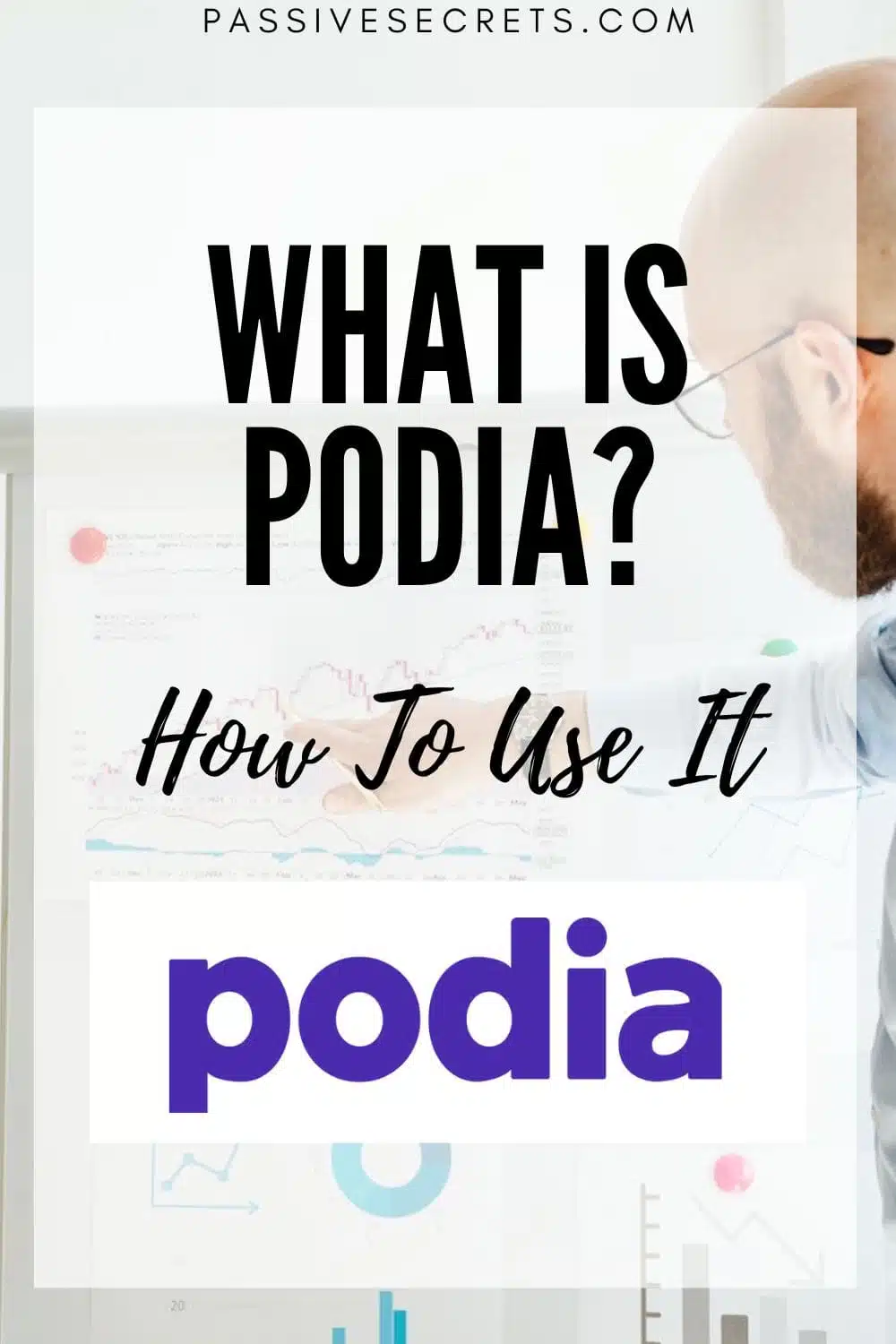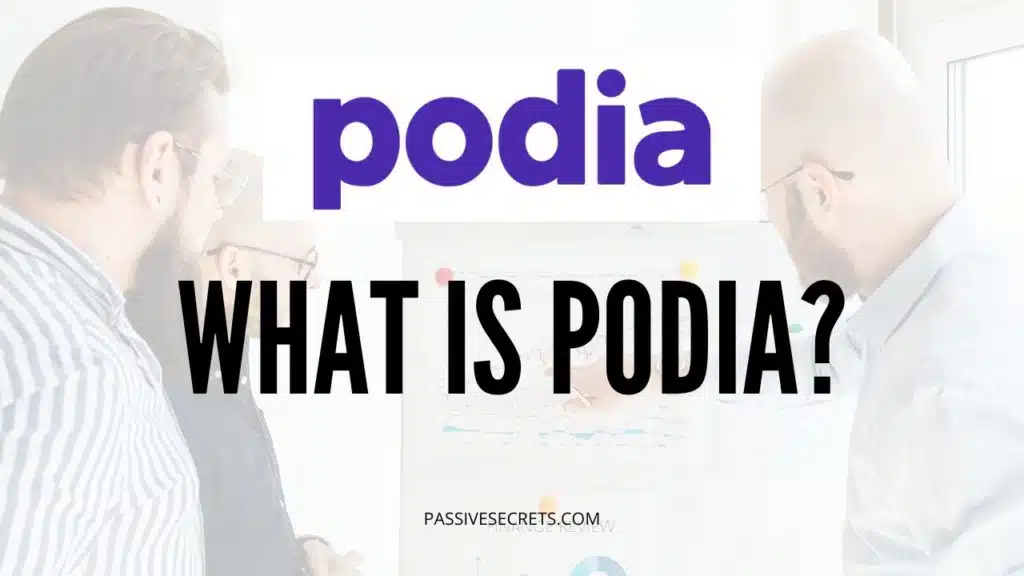
In today’s fast-paced digital age, online courses and digital products have become popular means of sharing knowledge and generating income. However, creating and managing these products can be daunting, especially for beginners.
This is where Podia comes in:
Podia is a comprehensive platform that entrepreneurs, creators, and businesses use to easily create, sell and manage digital products and memberships.
You see, Podia was founded in 2014 by Spencer Fry, who wanted to simplify the process of selling digital products and courses.
Over the years, it has grown to become a popular platform among online course creators, digital product sellers, and membership site owners. With its user-friendly interface and powerful features, Podia has helped thousands of creators to monetize their skills and expertise.
In this article, we will explore everything you need to know about Podia features, benefits, pricing plans, and customer support.
We will also compare it to some of its competitors and show you how to use it. Whether you’re a seasoned entrepreneur or just starting, this article will provide you with all the information you need to decide whether Podia is the right platform for you.
What Is Podia?
Podia is an all-in-one digital storefront that offers a comprehensive platform for creators and entrepreneurs to sell and manage digital products, online courses, and memberships.
It is a user-friendly platform that simplifies the creation and selling of digital products, allowing users to focus on their content creation and marketing.
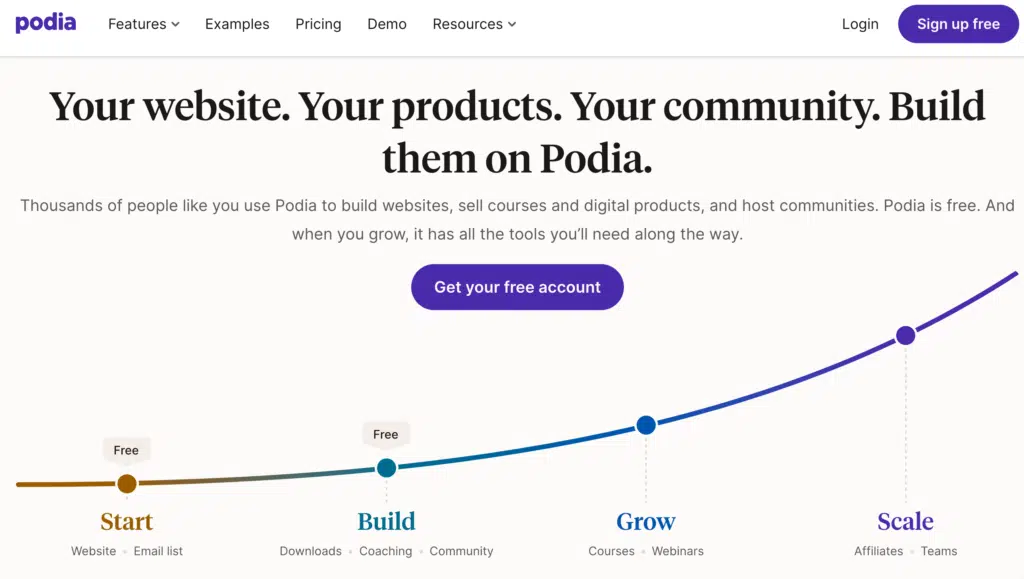
Podia offers a range of features to help creators and entrepreneurs create, market, and sell their digital products.
These Podia features include the following:
- Course builder,
- Membership site builder,
- Digital product sales funnels,
- Email marketing automation,
- Website builder,
- Affiliate management system,
- Integrations with third-party tools,
- And payment gateway integrations.
Below, we have taken the time to highlight Podia’s features and benefits.
Podia Features And Benefits
#1. Course Creation and Management
Podia offers a robust course creation and management tool that enables users to easily create and sell online courses. With its drag-and-drop course builder, users can create engaging and interactive courses by adding text, images, videos, quizzes, and assignments.
Users can also set pricing, create payment plans, and offer coupons to incentivize purchases. Podia also offers advanced features such as drip content, pre-launch courses, and course completion certificates, making it a versatile platform for course creators.
#2. Membership Site Management
With Podia’s membership site builder, users can easily create and manage membership sites. The platform offers an intuitive interface that allows users to create membership levels, manage content access, and handle payments.
Podia’s membership site builder also offers advanced features such as drip content, member-only forums, and custom branding, making it an excellent option for businesses and creators looking to monetize their content through memberships.
#3. Digital Product Sales Funnels
Podia allows users to sell digital products such as ebooks, templates, software, and other digital downloads. The platform offers a simple checkout process that enables users to sell their digital products efficiently.
Users can also set up custom checkout pages, create product bundles, and offer upsells and cross-sells to maximize their sales.
With Podia’s digital product sales funnel software, users can monetize their expertise and generate revenue from their digital products.
#4. Email Marketing
Email marketing is essential for businesses and creators looking to engage their audience and build their brands. Podia’s email marketing tool allows users to create and send emails to their subscribers, promoting their courses, products, and memberships.
The platform offers a range of email templates, automation workflows, and A/B testing, making it a powerful tool for email marketing campaigns.
#5. Website Builder
Podia’s website builder enables users to create and customize their storefronts, making showcasing their products and services easy. With its drag-and-drop website builder, users can create beautiful and responsive websites without requiring any coding skills.
The platform also offers a range of customizable templates, allowing users to create a website that reflects their brand.
#6. Affiliate Marketing System
Podia’s affiliate marketing feature allows users to partner with affiliates to promote their products and courses. Users can set custom affiliate commissions, manage their affiliates, and track their performance.
This feature enables users to increase their reach and generate more sales by leveraging the power of affiliate marketing. This makes Podia one of the best sales funnel builders for affiliate marketing.
#7. Integration with Third-Party Tools
Podia offers seamless integration with a range of third-party tools such as Zapier, Google Analytics, and ConvertKit. This integration allows users to streamline workflows, automate processes, and track metrics effectively.
Users can also integrate with other tools, such as Vimeo, Dropbox, and Google Drive, enabling them to deliver their content seamlessly.
#8. Payment Gateways
Podia offers a secure payment gateway that enables users to easily accept payments from their customers. The platform supports a range of payment options, including Stripe, PayPal, and Apple Pay.
Podia also offers a one-click upsell feature, allowing users to increase their revenue by offering upsells at the point of purchase.
With its user-friendly interface, seamless integrations, and robust features, Podia is an excellent choice for businesses and creators looking to monetize their content online.
How To Use Podia
Podia is an intuitive and user-friendly platform that simplifies the process of creating and selling digital products, online courses, and memberships. Here’s a step-by-step guide on how to use Podia to create, market, and sell your digital products:
- Create Your Account
To get started, go to Podia’s website and create your account. You can sign up for a free trial to explore the platform and its features.
- Set Up Your Storefront
Once you’ve created your account, you can set up your storefront by customizing your branding, adding your products, and setting up your payment gateway. You can also choose from a range of customizable templates to create a storefront that reflects your brand.
- Create Your Digital Products
To create your digital products, navigate to the Products tab in your dashboard and select “Add Product.” From there, you can choose the type of product you want to create, such as an online course, digital download, or membership.
Podia offers an intuitive drag-and-drop editor that allows you to easily create engaging and interactive content.
- Set Up Your Pricing and Payment Plans
Once you’ve created your digital products, you can set up your pricing and payment plans. Podia offers a range of options, including one-time purchases, payment plans, and subscriptions.
You can also offer coupons, discounts, and upsells to incentivize purchases.
- Create Your Membership Site
If you’re creating a membership site, Podia offers an intuitive membership site builder that allows you to create multiple membership levels, manage content access, and handle payments.
You can also offer drip content, member-only forums, and custom branding to enhance the member experience.
- Market Your Products
To market your products, Podia offers an email marketing tool that allows you to create and send emails to your subscribers, promoting your products and courses.
You can also create custom landing pages, integrate with social media, and leverage affiliate marketing to increase your reach and generate more sales.
- Track Your Metrics
Podia offers a range of analytics and reporting tools that allow you to track your metrics and optimize your marketing efforts.
You can track your sales, revenue, customer engagement, and more.
Pricing Plan
Podia offers two main pricing plans: the Mover and Shaker. Let’s explore each of these plans in more detail.
#1. Mover Plan
The Mover plan is the more basic of the two plans but still offers a range of useful features for creators and entrepreneurs looking to get started with online selling.
The Mover plan costs $39 per month, or $390 per year (a 17% discount over the monthly price). Here are some of the key features included in the Mover plan:
- Unlimited products: With the Mover plan, you can create and sell an unlimited number of digital products, courses, and memberships.
- Zero transaction fees: Unlike other online selling platforms, Podia does not charge transaction fees on sales, so you keep more of your earnings.
- Email marketing: The Mover plan includes an email marketing tool that allows you to create and send email campaigns to your subscribers.
- Customizable storefront: You can customize your storefront using Podia’s intuitive drag-and-drop editor and choose from a range of customizable templates to showcase your brand.
- Drip content: With the Mover plan, you can offer drip content to your customers, which allows you to release content gradually over time, keeping your customers engaged and coming back for more.
#2. Shaker Plan
The Shaker plan is Podia’s more advanced plan, offering additional features and tools for creators and entrepreneurs looking to take their online selling to the next level.
The Shaker plan costs $79 per month, or $790 per year (a 17% discount over the monthly price). Here are some of the key features included in the Shaker plan:
- All Mover plan features: The Shaker plan includes all the features of the Mover plan, plus additional features.
- Affiliate marketing: The Shaker plan allows you to set up an affiliate program, which allows other people to promote your products and earn a commission on sales.
- Memberships: With the Shaker plan, you can create and sell memberships, giving your customers ongoing access to your content and services.
- On-site messaging: The Shaker plan includes an on-site messaging tool allowing you to communicate directly with your customers on your storefront.
- Third-party code integration: With the Shaker plan, you can integrate third-party code into your storefront, allowing you to add custom features and functionality.
Podia also offers a 14-day free trial for both the Mover and Shaker plans, allowing you to test the platform and its features before committing to a paid plan.
Whether you’re just getting started or looking to take your online selling to the next level, Podia has a plan and features to suit your needs and budget. With its intuitive interface, zero transaction fees, and range of marketing and analytics tools, Podia is an excellent choice for anyone looking to sell digital products, courses, or memberships online.
Customer Support
One of the important aspects of any online platform is the quality of customer support and resources available to its users. In this regard, Podia offers a range of customer support options and resources to ensure its users have a positive and productive experience with the platform.
Let’s take a closer look at the customer support and resources available on Podia.
- 24/7 email support: Podia offers 24/7 email support to its users, allowing them to submit any issues or queries they may have at any time of the day. The Podia support team is highly responsive and aims to provide quick and effective solutions to any issues that arise.
- Knowledge Base: Podia also has a comprehensive Knowledge Base that contains a wealth of information on how to use the platform effectively. The Knowledge Base includes tutorials, guides, and FAQs on a wide range of topics, from creating products and courses to marketing and sales strategies.
- Live chat support: Podia offers live chat support during business hours (9 am-5 pm ET, Monday-Friday), allowing users to chat with a support team member in real-time and get quick answers to any questions they may have.
- Facebook community: Podia has an active Facebook community of users and experts where users can share tips, ask questions, and connect and network with other creators and entrepreneurs. The community is a great resource for finding inspiration, getting feedback on your work, and learning from other users.
- Video tutorials: Podia also offers a range of video tutorials that provide step-by-step guidance on how to use the platform effectively. The videos cover a range of topics, from setting up your storefront to creating and marketing your digital products.
- Personalized onboarding: Podia offers personalized onboarding for new users, helping them to get set up on the platform quickly and easily. The onboarding process includes one-on-one consultations with a Podia expert, who will guide you through the platform and help you get started with creating and selling your products.
- Podia Academy: Podia Academy is an online learning platform that offers courses on a range of topics related to online entrepreneurship and marketing. The courses are taught by industry experts and cover topics such as content creation, social media marketing, and email marketing.
Whether you need help with a technical issue, want to learn more about how to use the platform effectively, or are looking for inspiration and guidance on your entrepreneurial journey, Podia has a range of options to suit your needs.
With its comprehensive Knowledge Base, 24/7 email support, live chat support, Facebook community, video tutorials, personalized onboarding, and Podia Academy, Podia is committed to providing its users with the support and resources they need to succeed online.
Podia VS Competitors
Podia is an all-in-one platform that allows creators and entrepreneurs to sell digital products, courses, and memberships online. As such, it competes with a range of other platforms that offer similar features and services. In this article, we will examine how Podia compares to its competitors and what sets it apart.
Podia vs Teachable
Teachable is one of the most well-known and established platforms for creating and selling online courses. Like Podia, it offers a range of features, including customizable storefronts, course creation tools, and payment processing. However, there are some critical differences between the two platforms.

One of the main differences is pricing. Podia has a flat monthly fee that includes all its features, while Teachable charges a percentage of every sale made on the platform. This can add up quickly, particularly for creators with high sales volumes.
Another difference is in the type of content that each platform is best suited for. Teachable is primarily focused on courses, and its features are optimized for this type of content. On the other hand, Podia is more flexible and can accommodate a wider range of digital products, including courses, memberships, and digital downloads.
In terms of customer support, both Podia and Teachable offer similar options, including email support, live chat, and comprehensive knowledge bases. However, Podia also offers personalized onboarding and a Facebook community, which can be valuable resources for new users.
Overall, Podia and Teachable are both solid platforms for creating and selling online courses. Still, Podia’s flexibility, flat pricing, and wider range of features make it a more compelling option for many creators.
Podia vs Kajabi
Kajabi is another platform that competes with Podia in the digital products and course creation space. Like Podia, Kajabi offers customizable storefronts, course creation tools, and payment processing. However, there are some key differences between the two platforms.
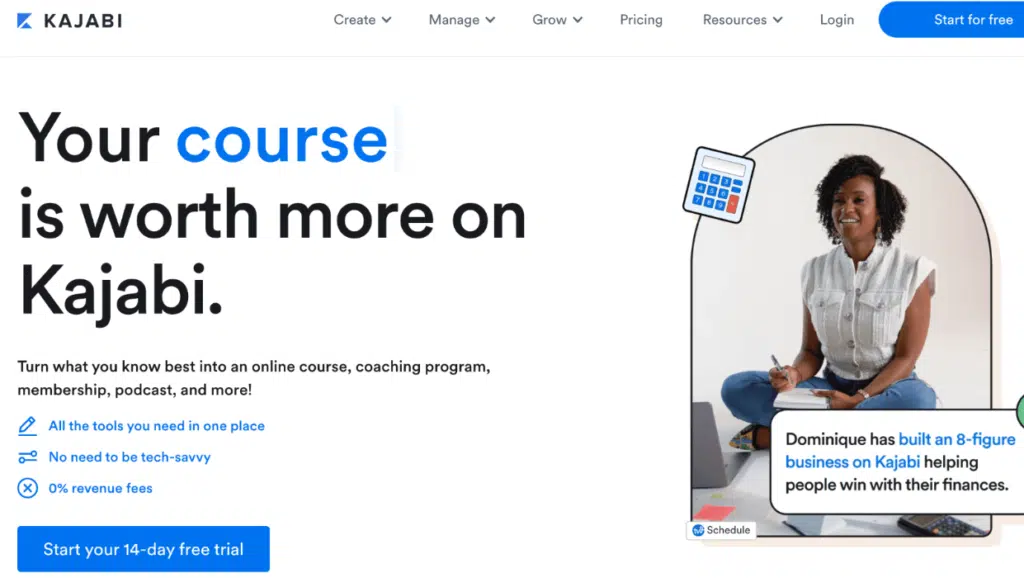
One of the main differences is in pricing. Kajabi is significantly more expensive than Podia, with plans starting at $119 per month. This can be a barrier for creators who are just starting or don’t have a large budget for their online business.
Another difference is in the range of features offered by each platform. Kajabi has a broader range of features, including advanced marketing automation tools and the ability to create webinars and events. However, many of these features may not be necessary for all creators, and Podia’s more streamlined approach may be a better fit for those who want a more straightforward platform.
In terms of customer support, Kajabi offers similar options to Podia, including email support, live chat, and a knowledge base. However, Podia also offers personalized onboarding and a Facebook community, which can be valuable resources for new users.
Overall, while Kajabi offers a wider range of features than Podia, its higher pricing and complexity may be a turn-off for some creators. Podia’s simpler approach, flat pricing, and flexibility make it a more appealing option for many.
Podia vs Gumroad
Gumroad is a platform that allows creators to sell a wide range of digital products, including ebooks, music, and software. While it doesn’t offer course creation tools like Podia, it does compete with Podia in the digital product space.
One of the main differences between the two platforms is in pricing. Gumroad doesn’t charge a monthly fee but instead takes a percentage of every sale made on the platform. This can be a more cost-effective option for creators with low sales volumes but can add up quickly for those with high sales volumes.
Another difference is in the range of features offered by each platform. While Gumroad is a more flexible platform overall, Podia offers a more specialized set of features that are optimized for creators selling digital products, courses, and memberships.
Podia’s course creation tools, for example, make it easy for creators to create and sell high-quality courses. In contrast, Gumroad’s focus on digital products may make it less ideal for creators who want to offer more comprehensive learning experiences.
In terms of customer support, both Podia and Gumroad offer similar options, including email support, live chat, and a knowledge base. However, Podia’s personalized onboarding and Facebook community can be valuable resources for new users who are just starting.
Overall, while Gumroad is a more flexible platform that can accommodate a wider range of digital products, Podia’s more specialized focus on courses and memberships, as well as its flat pricing and additional resources for new users, make it a more compelling option for many creators.
Podia vs Shopify
Shopify is one of the most well-known and popular e-commerce platforms available, and it also offers features for selling digital products, courses, and memberships. However, some key differences between Shopify and Podia make them better suited for different types of creators.

One of the main differences is in pricing. While Podia has a flat monthly fee that includes all of its features, Shopify charges a percentage of every sale made on the platform. This can add up quickly, particularly for creators with high sales volumes.
Another difference is in the range of features offered by each platform. While Shopify is a more comprehensive e-commerce platform that can accommodate a wide range of products and services, Podia is more specialized for creators selling digital products, courses, and memberships. For example, Podia’s course creation tools and membership features make it easy for creators to offer comprehensive learning experiences and build recurring revenue streams.
In terms of customer support, both Podia and Shopify offer similar options, including email support, live chat, and a knowledge base. However, Podia’s personalized onboarding and Facebook community can be valuable resources for new users who are just starting.
Overall, while Shopify is a powerful e-commerce platform that can accommodate a wide range of products and services, Podia’s specialized focus on digital products, courses, and memberships, as well as its flat pricing and additional resources for new users, make it a more compelling option for many creators.
Whether you are a course creator, author, or artist, Podia can help you build a successful online business and reach a wider audience with your digital products. By comparing Podia to its competitors and understanding what sets it apart, you can decide whether this platform is the right fit for your needs.
Conclusion

In conclusion, Podia is an all-in-one digital storefront platform that enables creators, entrepreneurs, and small business owners to easily sell their digital products and services.
With a user-friendly interface, powerful features, and affordable pricing, Podia makes it easy for anyone to create and sell their online courses, memberships, digital downloads, and more.

